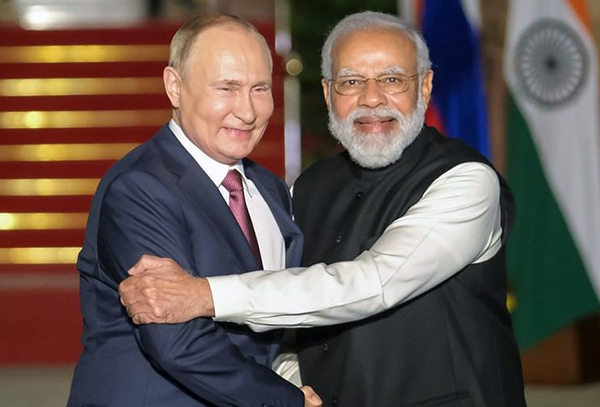India will have to grapple with the renewed threat of US sanctions for weapon purchases from Russia as well as a more belligerent China along its northern borders as a fallout of the Ukraine crisis.
Given its own strategic compulsions, India has so far walked the diplomatic tightrope between the US and Russia. “But India will now come under tremendous pressure from the US and its European allies to strongly oppose Russia’s invasion of Ukraine,” a senior defence official said on 24 February.
India till now has managed to stave off sanctions under the US law called CAATSA (Countering America’s Adversaries through Sanctions Act), which seeks to prevent countries from buying Russian weapons, by mounting a major diplomatic-military campaign with both the Trump and Biden administrations.
This allowed India to induct the first of the five S-400 Triumf surface-to-air missile squadrons a couple of months ago, under the $5.43 billion (Rs 40,000 crore) contract inked with Russia in October 2018, as an “urgent national security requirement” to counter aggressive neighbours like China and Pakistan.
The US also did not make noises about India’s inking of another $3 billion deal with Russia for the lease of an Akula-1 class nuclear-powered attack submarine in March 2019.
Though Russia still remains its largest defence supplier, India has increasingly turned to the US, France and Israel for its military hardware and software requirements. The US itself has bagged lucrative Indian defence deals worth over $21 billion since 2007. “But the Biden administration may no longer be willing to grant a waiver to India for buying the Russian S-400 and other weapons,” another officer said.
On the China front, India will need to keep an eagle-eye on the annual exercises of the People’s Liberation Army (PLA) in March-April along the 3,488-km Line of Actual Control (LAC) and be “prepared for any contingencies”, defence officials said.
“With the attention of the US-led West diverted to Russia’s invasion of Ukraine instead of countering China in the Indo-Pacific, an emboldened Beijing is likely to indulge in muscle-flexing along the LAC, especially in the Arunachal sector,” an official said.
As it is, the PLA has shown no signs of de-escalating the 21-month-long troop confrontation in eastern Ladakh, even as it has systematically strengthened its military positions and infrastructure all along the LAC.
Apart from conventional military capabilities, China’s focus on space, cyberspace and “informatized” and “intelligentized” warfare has been a major concern for India.
“China’s latest demonstration of physically moving one of its disabled satellites into the graveyard orbit is bringing in newer threats in the race to weaponise the space domain, a domain hitherto considered relatively safe,” IAF chief Air Chief Marshal V R Chaudhari said at a seminar on 24 February.
The Ukraine crisis has also once again reinforced the inescapable need for India to emerge out of its strategically-vulnerable position of being the world’s second-largest arms importer after Saudi Arabia.
“Instead of half-baked measures, India must make self-reliance in military requirements a concrete national mission, along with a special thrust on space, cyberspace and special operations. Moreover, a robust nuclear deterrence is required to deter all adversaries,” an official said.


















